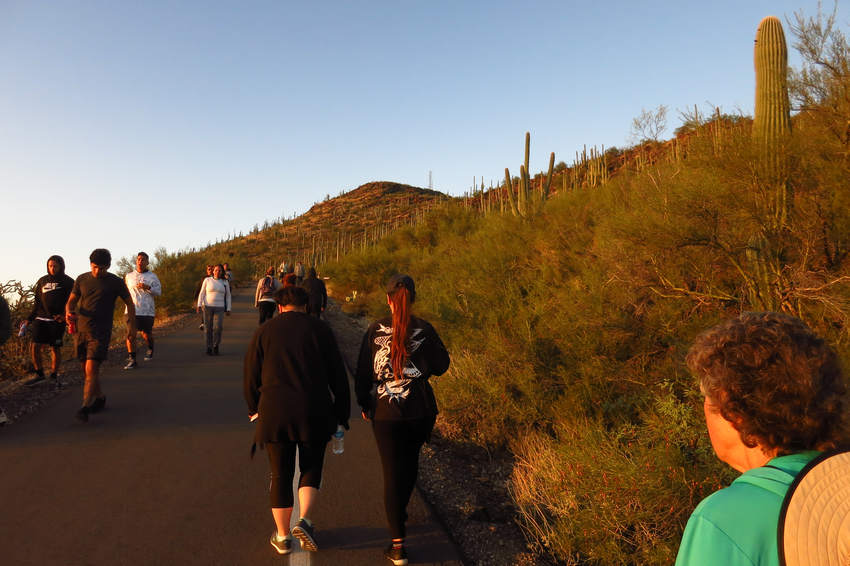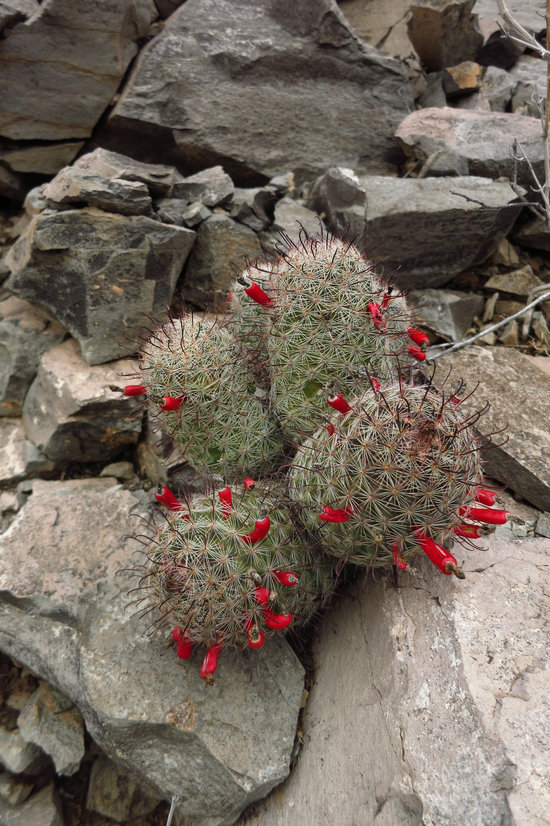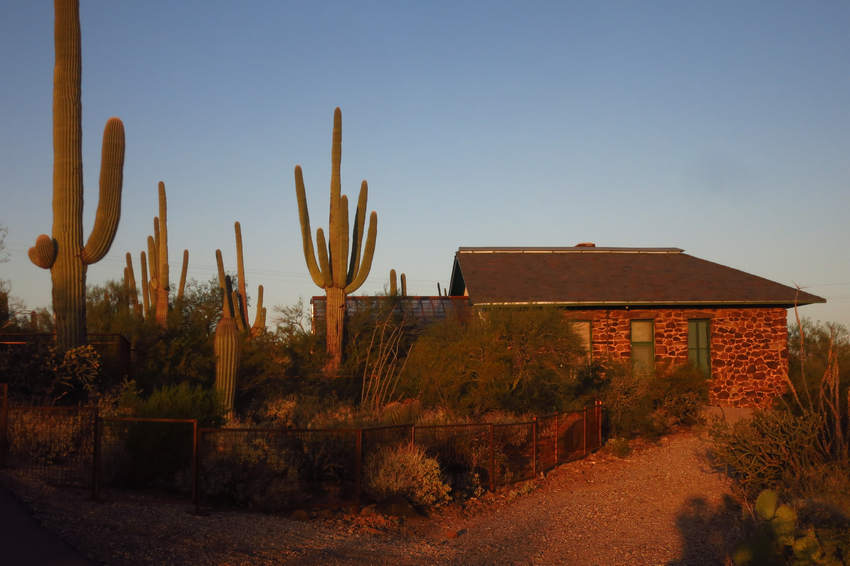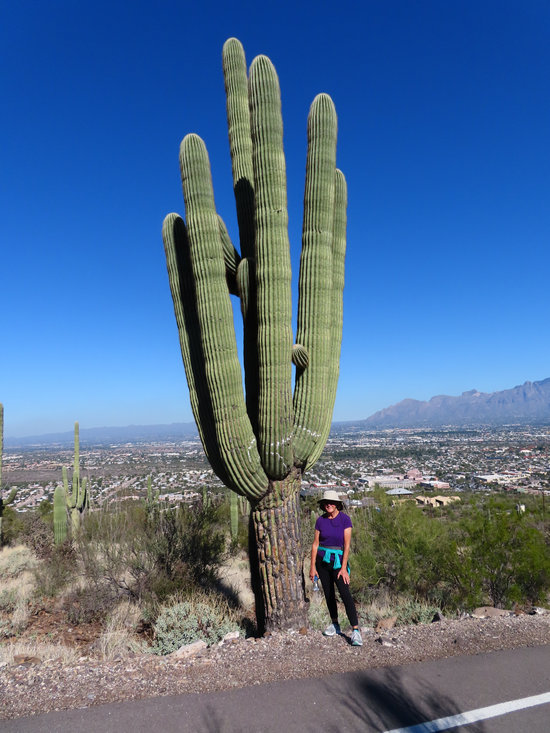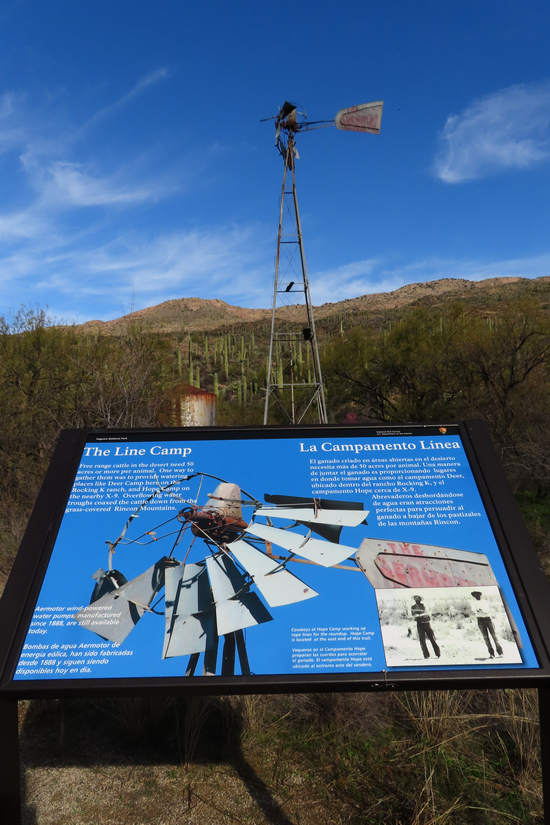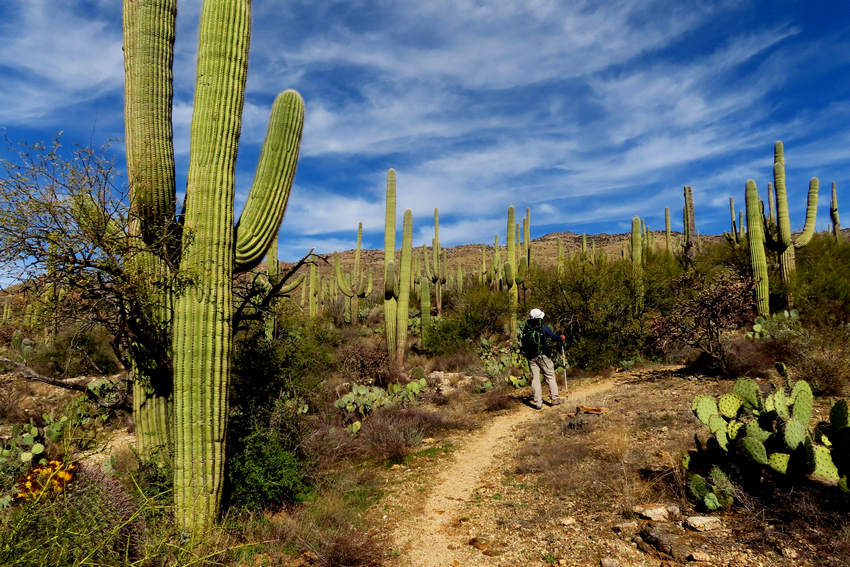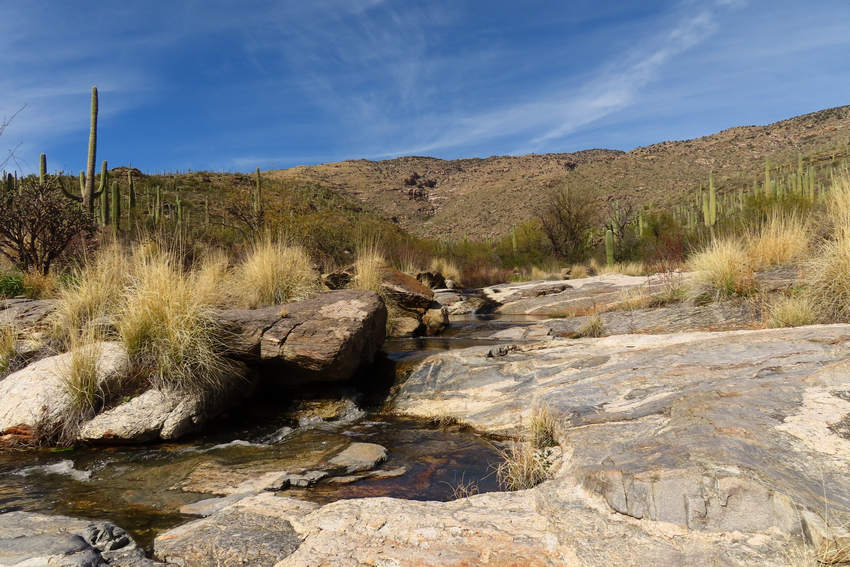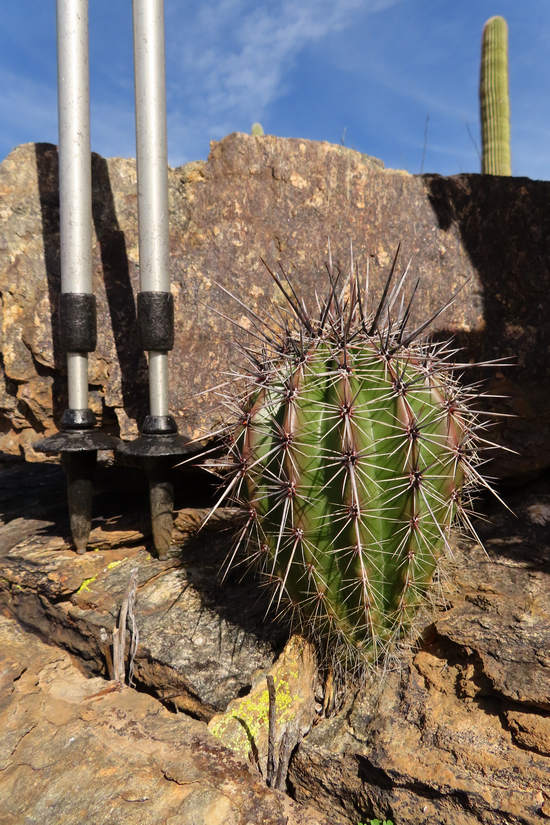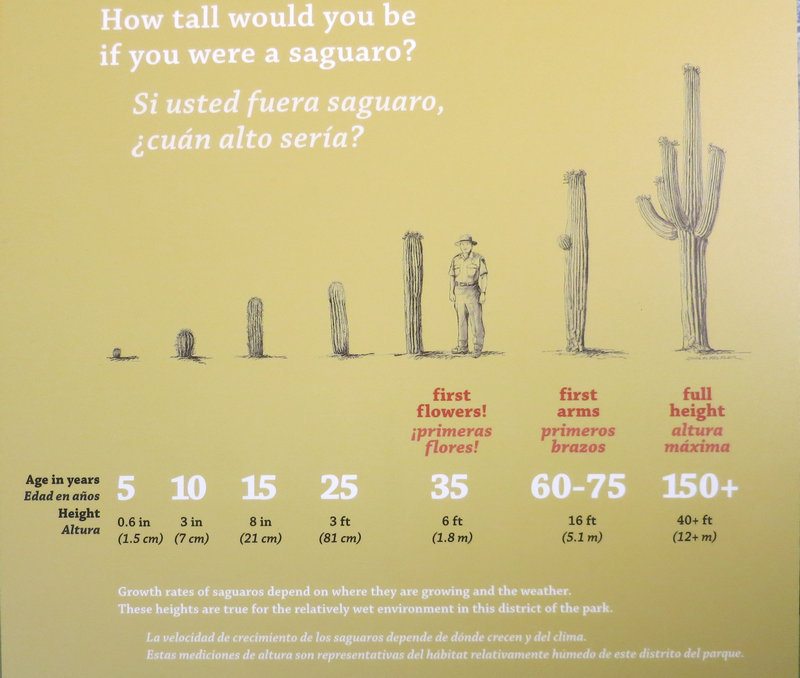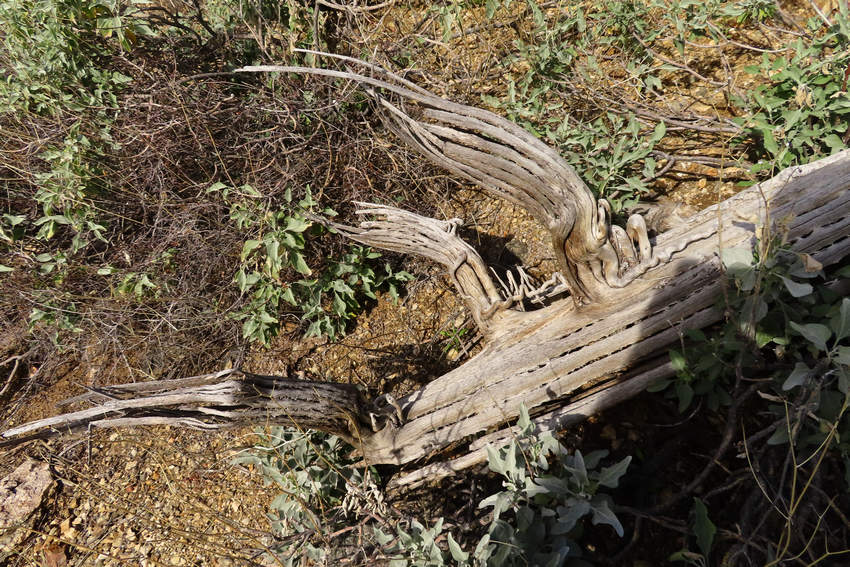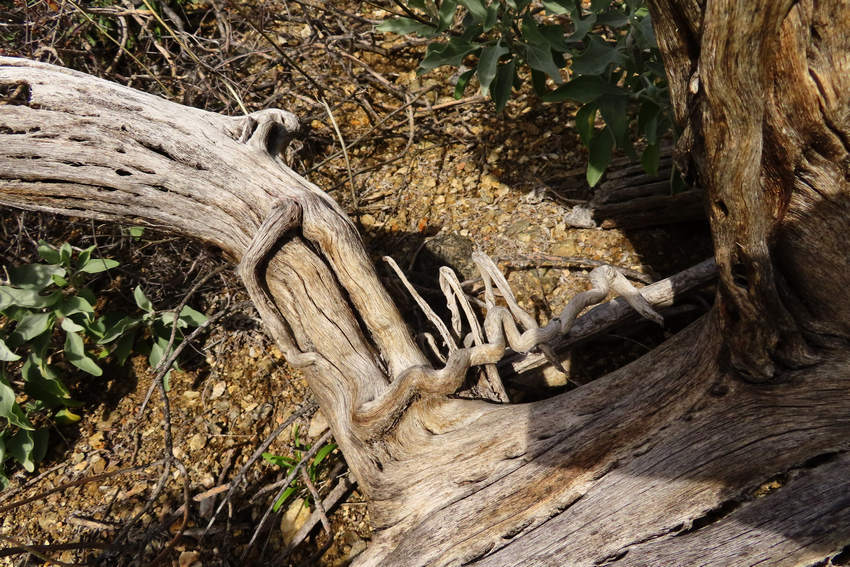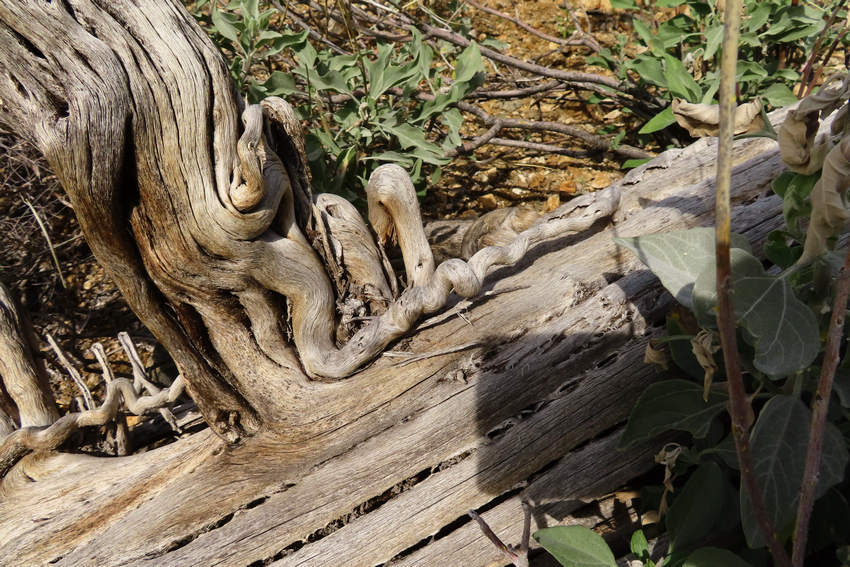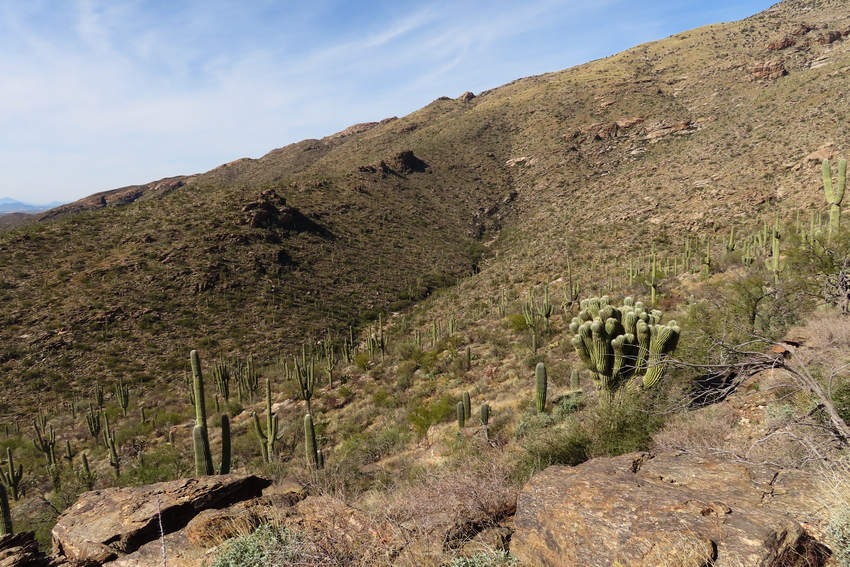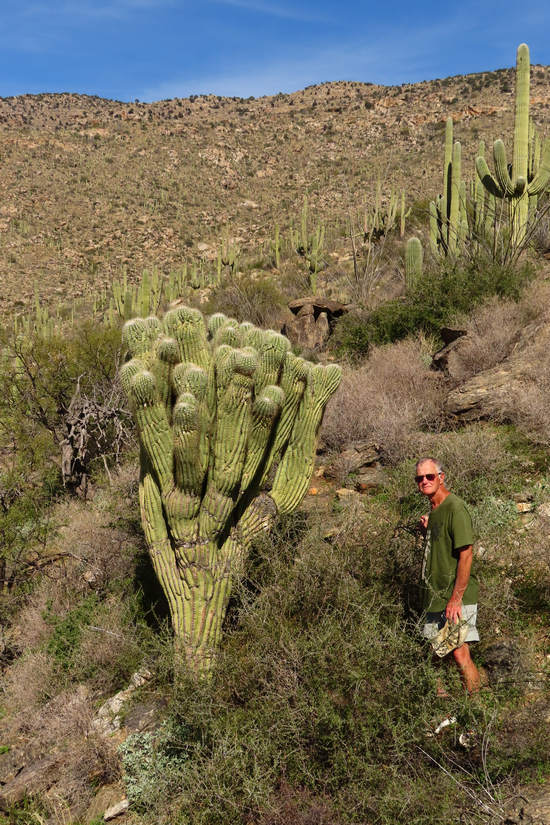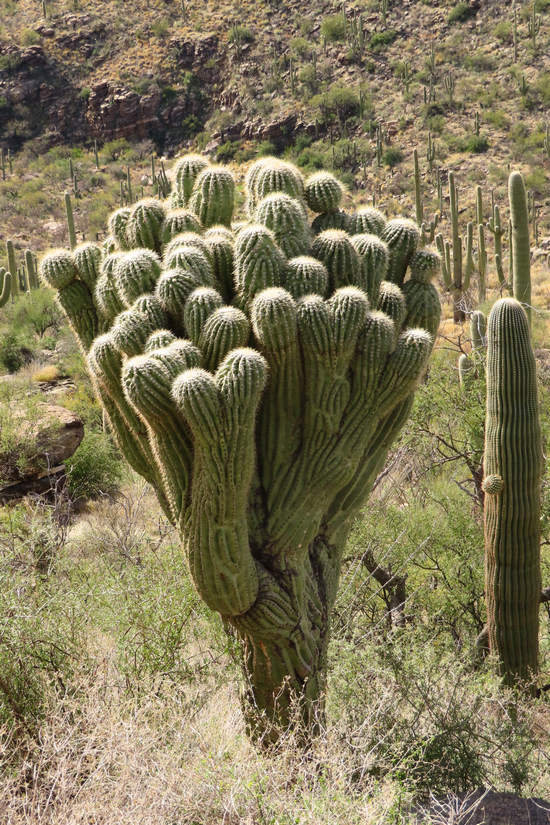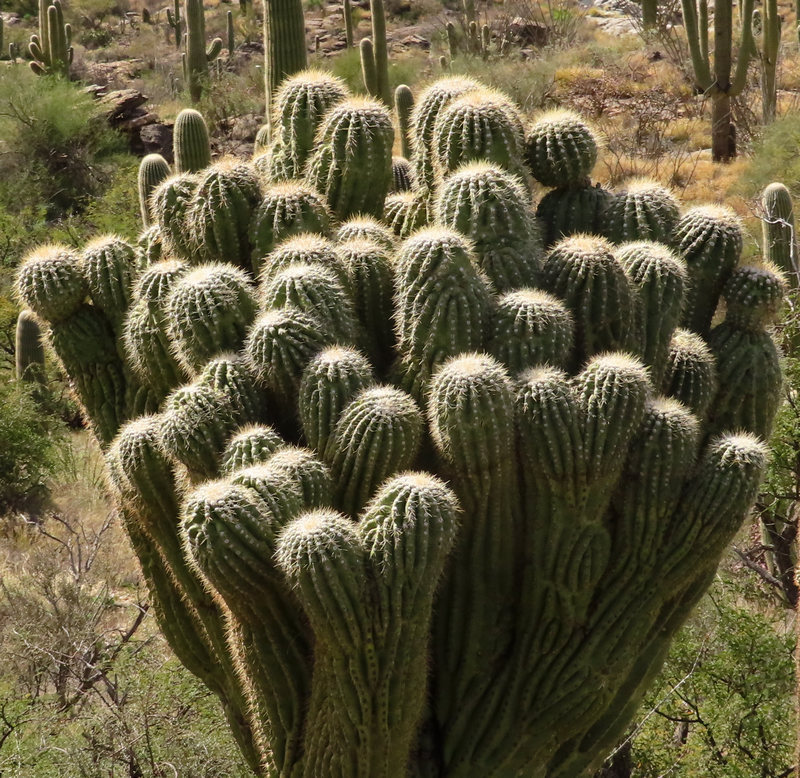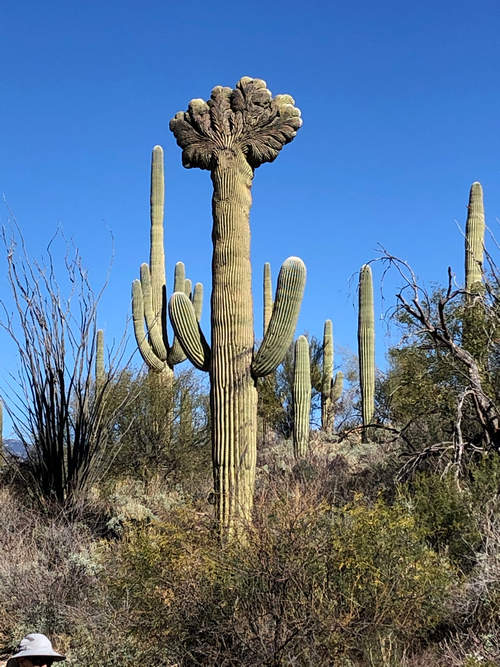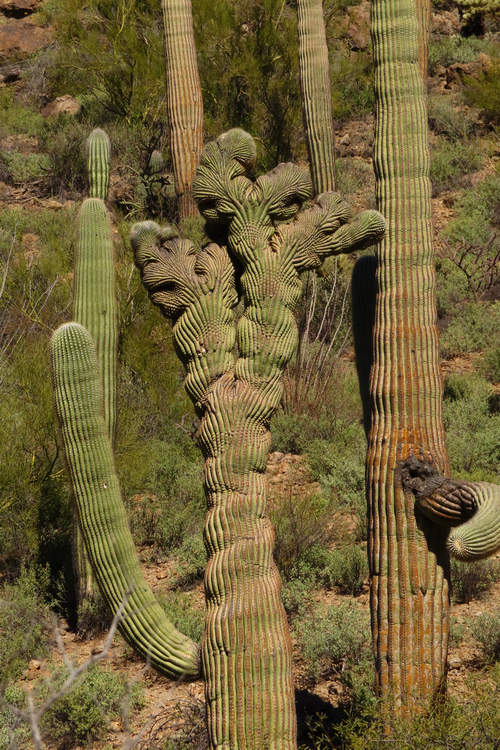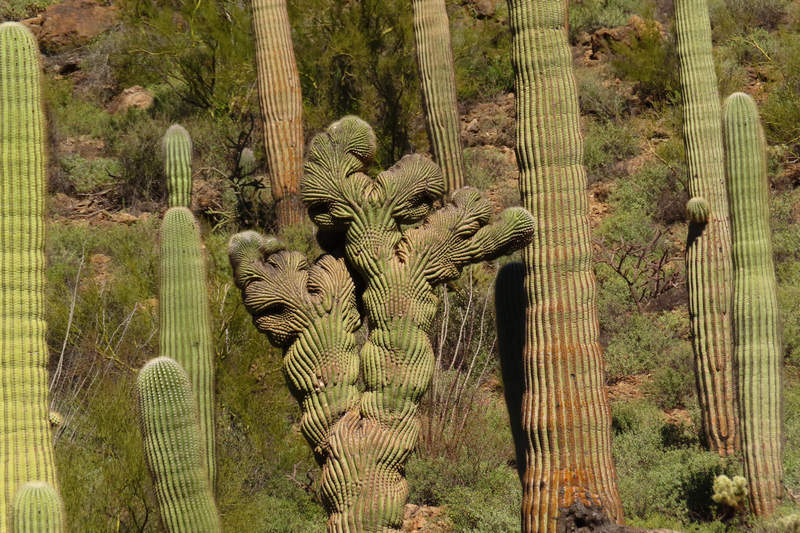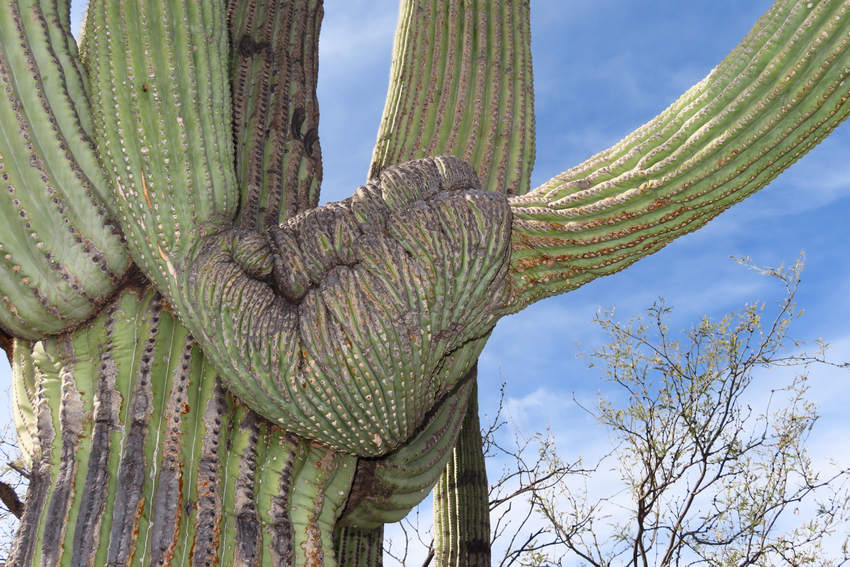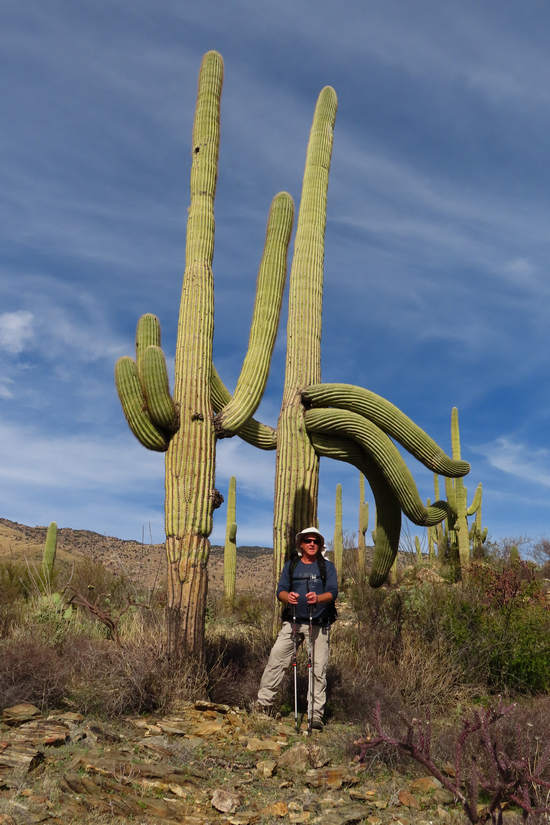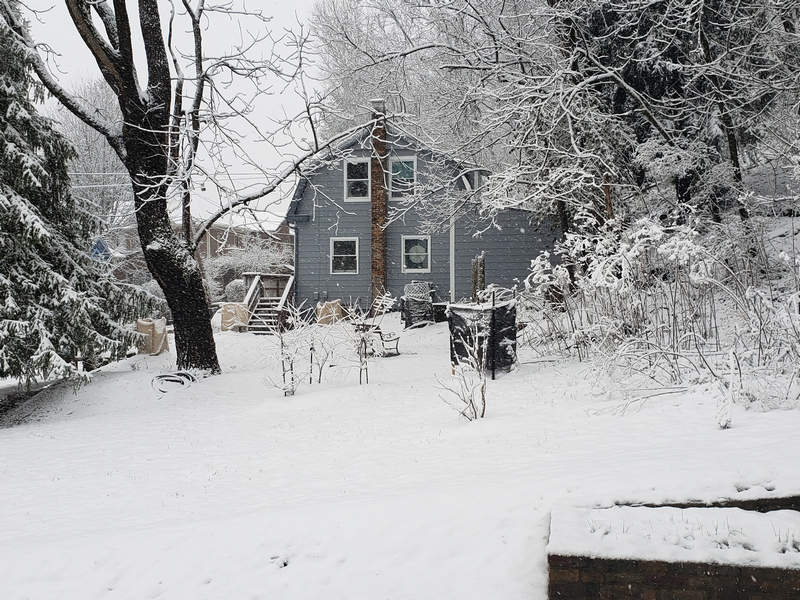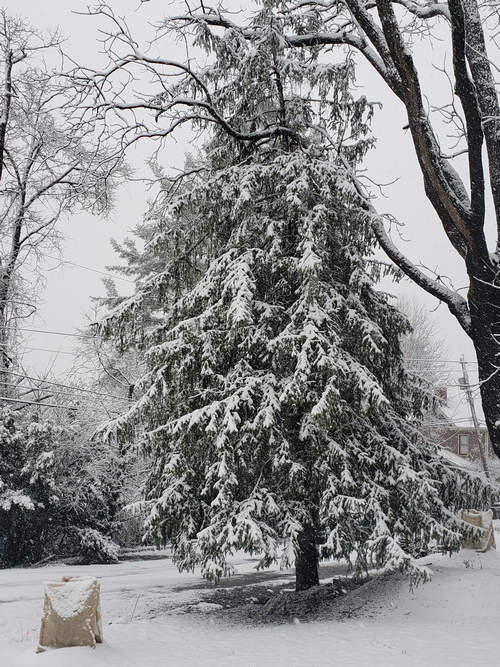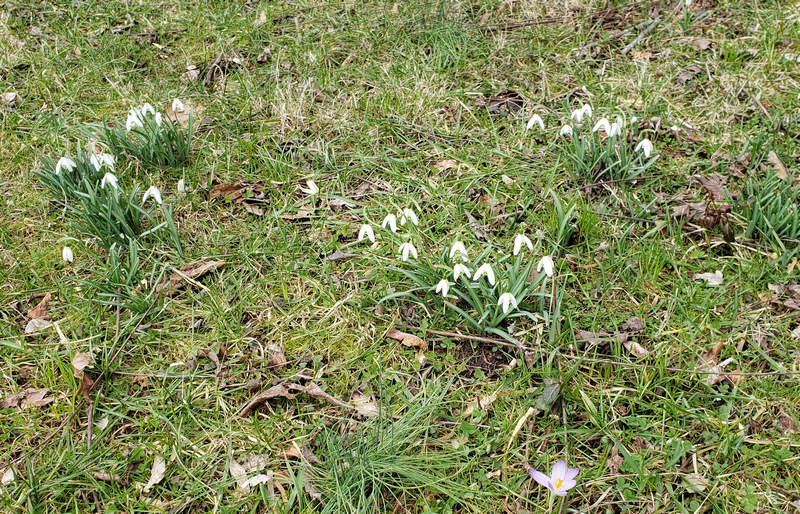Mike Breiding's Epic Road Trips: Spring 2020
Tucson Area Hikes
Potpourri Number 1
Tumamoc Hill in the Tucson Mts and the Quilter Trail in the Rincon Mts
Arizona Hiking
Potpourri Number 1
On the east side of the Tucson Mountain range sit two prominent peaks: Sentinel Peak (aka A Mountain) and Tumamoc Hill.
Click on the photos below for a larger image.
Here you can see both peaks and their close proximity to each other. On the left is Tumamoc Hill which is owned by the University of Arizona. Since 1905 the U of A has managed a desert laboratory on this 860-acre ecological reserve.
On the right you can see Sentinel Peak also knows as "A Mountain" for the huge white washed "A" on the campus facing side of the mountain. How tacky.
Sentinel Peak is home to Sentinel Peak Park which is owned and operated by the City of Tucson.
There is a roadway to the summit with several observation points and ramadas. It is a very popular spot with locals and tourists alike and like the summit of Tumamoc Hill it provides commanding views of the Tucson basin and the surrounding mountain ranges.
In the 1880s the remains of an Indian fortification was constructed there to keep a look out for approaching enemies and thus the name "Sentinel Peak".
Just recently a pilot program was started for Sentinel Peak Park. Now every Monday is non-motorized use only. Walkers will now have two peaks to climb and Sentinel is also open to cyclists.
Tumamoc Hill derives from the Tohono O'odham place name Chemamagi Du’ag — Hill of the Horned Lizard.
Although Horned Lizards are considered common in the Sonoran Desert Betsy and I have spotted just one in the 9 years we have been wintering here in Tucson.
A typical dawn on Tumamoc Hill. On weekends thousands of people of all shapes and sizes, ages and abilities huff and puff their way up the steep 1.5 miles to the summit.
Any time of the day Tumamoc is busy.
This photo was shot in January of 2019. This year has as yet not see snow down so low in the Catalina Mountains.
There are many interesting plants along the roadway to the summit. This is one of the species of Mammillaria cacti. They are very common in the Sonoran desert and we see them on most of our hikes.
The first species was described by Carl Linnaeus as Cactus mammillaris in 1753, deriving its name from Latin mammilla, "nipple", referring to the tubercles that are among the distinctive features of the genus. Numerous species are commonly known as globe cactus, nipple cactus, fishhook cactus or pincushion cactus though such terms may also be used for related taxa, particularly Escobaria.
Source: WikiPedia
Here can be seen the older and newly emerging fronds of one of the 5 species of Star Ferns occurring in the Sonoran Desert. This one is known as star cloak fern or Standley's cloak fern. (Notholaena standleyi).
Notholaena standleyi is a perennial species that typically grows in desert regions at elevations from 300 to 2100 m. It is found on rocky hillsides, usually in the crevices created by limestone and granite boulders that provide the partial shade the plant prefers. During periods of drought, the frond may curl and become brown until water is available, an adaptation to the semi-arid environments it inhabits.
Source: WikiPedia
One of the resident Roadrunners on Tumamoc Hill. They show little fear of humans and will run along side you as you walk up or down the hill. Roadrunners are in the cuckoo family.
A bird born to run, the Greater Roadrunner can outrace a human, kill a rattlesnake, and thrive in the harsh landscapes of the Desert Southwest. Roadrunners reach two feet from sturdy bill to white tail tip, with a bushy blue-black crest and mottled plumage that blends well with dusty shrubs. As they run, they hold their lean frames nearly parallel to the ground and rudder with their long tails. They have recently extended their range eastward into Missouri and Louisiana.
Source: allaboutbirds.org
At the half way point is the research facility building. This building is for horticultural research and the old and dilapidated arched roof green house was recently reconstructed.
This interpretive sign explains how the Hohokam people cultivated agave on this site. Click on the photo to read the details.
Agave murpheyi was cultivated by the Hohokam and possibly other Native Americans for both food and fiber. For food the basal rosette was harvested just before the Hohokam agave sent up a flower stalk. At this time the concentration of sugars in the rosette is at its highest. The rosettes, weighing about 9 pounds (4.1 kg), were cooked for two or three days in a pit filled with hot stones and covered with hot coals and dirt. The baked rosette, compared in taste to a sweet potato (although containing inedible fiber), is nutritious with 347 calories and 3.5 grams of protein per 100 grams.
Source: WikiPedia
One of the many fine specimens of Saguaro (Carnegiea gigantea) to be found on this 860-acre ecological reserve.
The summit! After a strenuous Tumamoc Walk it is customary to touch the gate and head back down the hill. And so we did.
OK. Now we will leave the Tucson Mountains and head across the basin to the Rincon Mountains for a hike in the beautiful Rincon Valley.
This fall and winter of 2019/2020 Betsy and I have been getting more familiar with the Rincon Mountains. Like each mountain range which rings the Tucson Basin, the Rincons are unique.
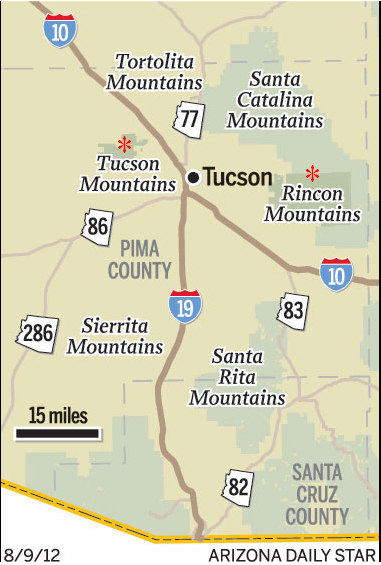
Some background. I met Allen Swanson several years ago on a hike. Allen arrived in Tucson in 1974 and had this to say:
46 years here(Tucson). Came for school. Hated the heat but saw a few bikinis in late January and decided the desert wasn’t so bad. Besides, we left in summer if I wasn’t working. Liked camping in the mountains, rock climbing, and day hiking. Backpacking came very late in life - 52. ~AS
Allen knows the trails and geography of the area well. He has been very helpful by sharing his knowledge and gently correcting me when required.
Allen has suggested more than one trail for our enjoyment and some of them are in the Rincon Mountains. One trail which he recommended was the Quilter Trail in Saguaro National Park. It is accessed from the Hope Camp Trail. The Quilter Trail is part of the 807 mile Arizona trail which stretches from Mexico north to the Utah border. This section of the AZ Trail meanders and climbs up into the Rincon Mountains and then in the Catalina Mountains. Knowing my interest in native plants of the Sonoran Desert Allen mentioned there was an unusual Saguaro which could be seen by hiking the Quilter Trail and he thought it would be worth a look. And indeed it was!
So I set up a time to check it out. I contacted Allen and Gary Linton, a snowbird from Canada, about joining me on the hike. Unfortunately Allen had a conflict and could not join Gary and me. Next time...
The Rincon Valley has a rich ranching history and remnants of those by-gone days can be seen along the Hope Camp Trail. Unfortunately cattle ranching anywhere is detrimental to native species and this area was no different. The cattle herds were particularly damaging to the Saguaros in the Rincon Valley.
Here we are at the junction of the Hope Camp and Quilter Trails. The trail is named for John "Jake" Quilter who was a Saguaro National Park crew member. He died suddenly while hiking on Manning Camp trail. He was just 26 years old.
Allen was not exaggerating and the Quilter trail was gorgeous from start to finish.
Allen had mentioned this creek crossing as a good lunch spot but we had other plans.
We explored along the creek for a bit. It was quite beautiful and Gary spotted this cute little Saguaro growing out of a crack in the rock.
It was just about 8" tall so according to the chart below that would make it about 15 years old.
It is not unusual to come across a fallen giant but this one had some strange looking and distorted "ribs".
Very odd.
Very odd indeed!
Now, on to the Main Event!!!
Here it is - our first look at Carnegiea gigantea "Allen's Anomoly"
This blew my mind!
How many "heads" can you count? I estimate about 70 of them. Bizarre. What could cause such an aberrant growth pattern? Science to the rescue!
According to retired U of A botanist Dr Jon Weeks this is the result of somatic mutation which is an alteration in the DNA. Is this also what causes the well know variation called "cresting or fasciation"?
Fasciation, also known as cresting, is a relatively rare condition of abnormal growth in vascular plants in which the apical meristem (growing tip), which normally is concentrated around a single point and produces approximately cylindrical tissue, instead becomes elongated perpendicularly to the direction of growth, thus producing flattened, ribbon-like, crested (or "cristate"), or elaborately contorted, tissue.
Fasciation may also cause plant parts to increase in weight and volume in some instances. The phenomenon may occur in the stem, root, fruit, or flower head. Some plants are grown and prized aesthetically for their development of fasciation. Any occurrence of fasciation has several possible causes, including hormonal, genetic, bacterial, fungal, viral and environmental causes.Source: WikiPedia
Check out this symmetrically fasciated beauty!
This is what I think of as a "classic" crest. This photo was taken by hiking buddy Cindy Nolot along the wash near the intersection of the Garwood Dam and Wildhorse Tank trails in the Rincon Mountains.
There are some bizarre variations of the classic crest and this is one of them.
This interesting specimen is on the David Yetman Trail in the Tucson Mountains.
After taking numerous pics of "Allen's Anomoly" we continued on up the trail to the ridge line and had a peaceful lunch while perched on "Linton's Ledge".
On the way back down the trail we spotted this strange one. We had missed it on the way up because it was not visible from the other direction.
These drooping "arms" are the subject of much speculation as to the cause. As far as I can tell no one has a definitive answer. Things like this have spawned the saying: "The Saguaro is the most studied plant we know the least about."
The last shot of the day - Rincon Peak. A great hike thanks to Allen and Gary.
Lagniappe!
A few day ago our neighbor Marion in Morgantown thoughtfully sent us these photos of our yard and house. She had this to say: "Crazy WV winter. About a week ago your place was covered in snow. Today there are flowers blooming in the grass and birds are chirping."
Our long term plan is to never see snow in the yard. This is close enough!
The white flowers are snowdrops (Galanthus) which have naturalized in our yard. This made me think about wanting to plant some daffodils around the place as there is not one to be found.
See you next time...
Mike and Betsy



